BenQ XL2720T Gaming Monitor Reviewed
by Chris Heinonen on June 17, 2013 4:35 PM ESTWith TN panels you are of course subject to the problem of poor viewing angles in comparison to other monitor technologies. The problem also accentuates itself on larger displays like the XL2720T, where the viewing angle is larger for your vision, and so the edges start to have color shifts even when you are directly centered on the screen. Even with regular content on the screen, I can notice shifts in contrast and color at the edges of the screen in general use, which I find distracting. I didn’t notice it vertically as much, but the angle isn’t nearly as large as with the horizontal position.
I also found the overall look of the XL2720T to be a bit worse than with other displays I have had in recently. Perhaps it’s the anti-glare coating, but everything looks slightly fuzzy, even the simple black text in this document that I’m typing right now. With the lower resolution I’d expect to see more sharp angles and pixels, but everything looks a bit too smoothed out because of this issue. I have to say that for general use, I can’t imagine living without an IPS monitor at this point.
The BenQ has a lot of preset modes available for calibration, but the best data was obtained with the sRGB mode. Standard was a bit better for grayscale, but color accuracy was better in sRGB making it the overall best choice. Surprisingly, Photo mode was far and away the worst preset on the BenQ when it comes to accuracy, even more than the FPS modes are. Perhaps they meant to call it “Galaxy S3 Photo Mode”, but I’d usually expect a mode for viewing photos to be accurate. So just don’t use it, unless you want a really vivid Instagram filter applied to all your photos on your PC.
The uncalibrated grayscale performance for the BenQ is decent though not outstanding. The average dE2000 is just below 3.0, which is the visible threshold. As you look at the RGB balance you can see there is a distinct blue-green tint to the grayscale, which you can easily see on screen as well. The gamma comes out just above 2.0, well off our 2.2 target, and it isn’t linear at all which will lead to images that are a little dark in the shadows and too washed out in the highlights. The contrast ratio of 706:1 is on the low side, but the gamma issue really leads to a bit of a washed out image.
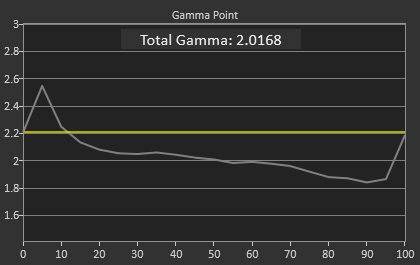
The color points are much better, with a dE2000 of 2.1 and most luminances are pretty close to correct, with all the colors having a dE2000 below 3. The worst issue is the 100% saturation, 100% luminance white that throws the average off a bit, and that will be noticeable as that’s your background white in most applications. Overall you get good numbers for a preset mode.
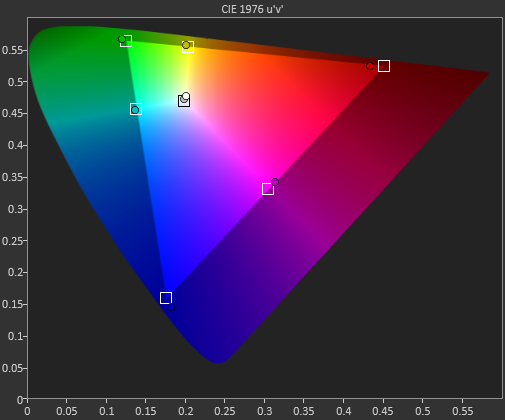
The colorchecker tests look good overall with the exception of two orange shades that are well off their target. Every other color has a color error that is practically invisible, as long as it isn’t right next to a correct sample. The biggest issue is that the luminance levels are too high across the board, and luminance is the most noticeable error in color.
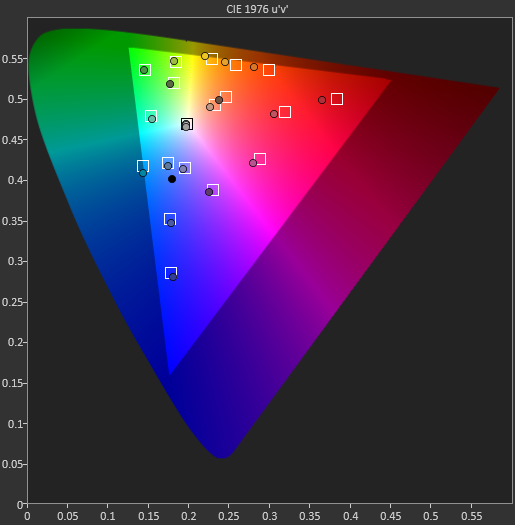
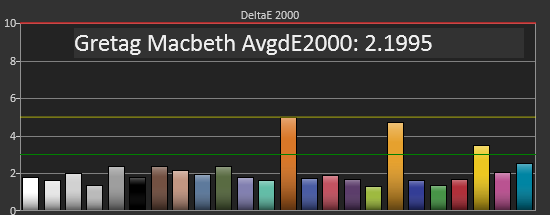

Our saturations data is also very good, showing very uniform errors across the spectrum, and no really large spikes to be heavily concerned with. Overall for a pre-calibrated mode, the sRGB does a good job on the BenQ XL2720T.
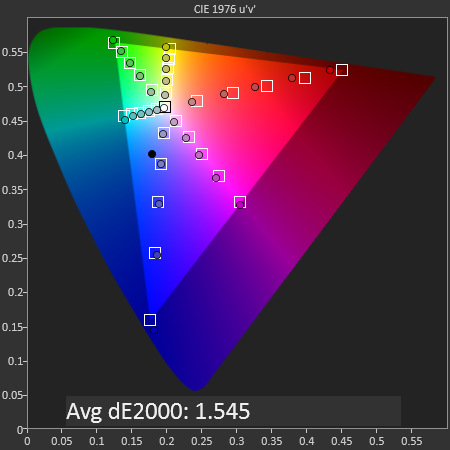
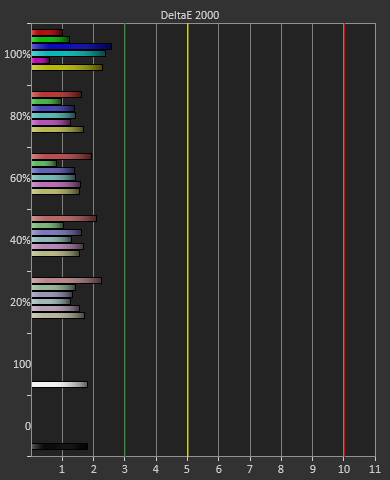
Looking at the gamut, we see just below 71% of the AdobeRGB gamut, which is what sRGB should measure out at.
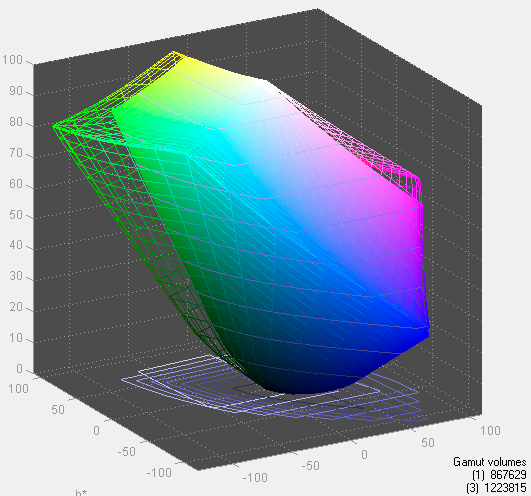
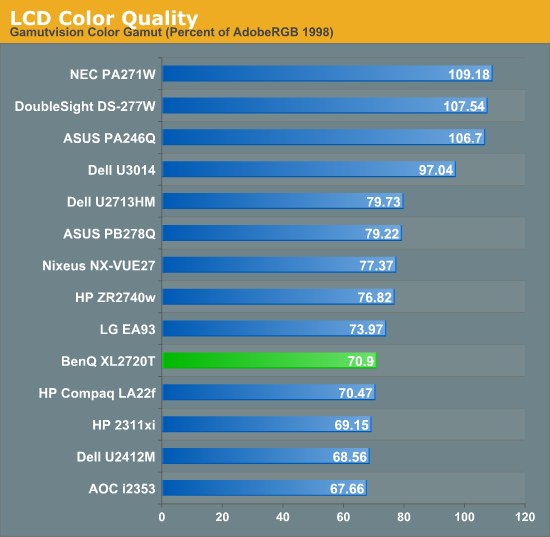









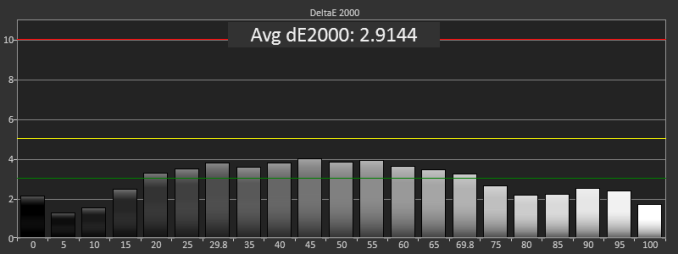










79 Comments
View All Comments
mdrejhon - Tuesday, June 18, 2013 - link
The XL2720T has better color quality than the VG248QE.Someone owns both monitors, and reported this.
The VG278H is actually pretty competitive to the XL2720T, despite its age.
What makes them really worth it, is the LightBoost.
Death666Angel - Tuesday, June 18, 2013 - link
Wow, this review badly needs a table of the specs on the first page.brandonicus - Tuesday, June 18, 2013 - link
I hate to be "that guy" but I found it really annoying you assumed we knew what the resolution was... unless I'm blind the only place it was mentioned was in the "Posted in" header and the seventh and eighth page. I feel like something that important should be mentioned upfront.blackoctagon - Tuesday, June 18, 2013 - link
Thanks for the review, Chris, but WHY exactly did you choose to measure input lag using the Leo Bodnar test? Apart from the fact that it cannot measure the screen's performance at 120Hz (the refresh rate at which this screen is designed to be played), the test itself seems to not have undergone the same verification as, say, PRAD.de's use of an oscilloscope has...for a review that starts out with a discussion about input lag, and even mentions that you were "still in search of" the ideal test, I expected to hear your reasoning for choosing this methodology over others.cheinonen - Tuesday, June 18, 2013 - link
I actually talked to TFT Central about this, as they have an oscilloscope method as well (which is beyond my means, unfortunately). They've tested multiple ways and feel the Leo Bodnar winds up as the most accurate version out there right now as well, other than a scope method. SMTT was working relatively well, but it has a license, and he stopped selling them. Our license expired, so I can't use it anymore.Searching for a totally accurate, and affordable, lag measurement device continues. I'll look into the Audrino solution that was mentioned here and see how that looks.
blackoctagon - Wednesday, June 19, 2013 - link
Thank you for the reply. Looking forward to seeing where this search leads youmdrejhon - Wednesday, June 19, 2013 - link
I'm the inventor of the Arduino Input Lag Tester, which runs via a USB cable connected to the computer.It features:
- Sub-millisecond accuracy
- Works at all computer resolutions and refresh rates.
- USB cable latency compensation (subtracts calculated USB cable latency)
- Costs only $40 to build.
It's currently undergoing beta testing, with custom software I have created.
Contact me at mark[at]blurbusters.com for more information about the Arudino Input Lag Tester.
blackoctagon - Thursday, June 20, 2013 - link
Interesting. But is it 'Audrino,' 'Arduino' or 'Arudino' test? :)I see all three (mis-?)spellings on this page
mdrejhon - Thursday, June 20, 2013 - link
Apologies. It's a hard word sometimes.The correct spelling is Arduino, which refers to an easy-to-program hobbyist microcontroller:
http://www.arduino.cc/
It's a home made input lag meter involving (1) Almost any Arduino with a USB port, (2) a photodiode, (3) a resistor, and (4) some wires. It's an open source input lag circuit I've developed that is very easy to build (easier than building a computer -- no soldering iron required!). I'll be publishing some software that makes everything run as an accurate input lag tester (including USB cable latency/jitter compensation), since the assembly is connected to a PC displaying flashing squares.
Pastuch - Tuesday, June 18, 2013 - link
Honestly, this review is a huge let down. When I started reading this website 10 years ago the articles were always informed and well researched. This review is sorely lacking in that regard. The only reason people are still buying 120hz displays is for Lightboost capable 2d gaming. The CS, BF and Quake communities LOVE the CRT like motion response of Lightboost and this is one of the better models to have that capability. http://www.blurbusters.com/ has all the relevant info, Mark is an invaluable resource and I implore you to contact him for more info.You complain loudly about IPS color quality in a gaming review but you admit yourself that gaming isn't a hobby you’re interested in. Your conclusion argues that the money could be better spent on an IPS 2560 display. Do you know how many video cards it takes to run Planetside 2 at 2560 at 80FPS+? You need two Geforce 780s! Can I borrow $1200?
I used to own a 2560x1440 IPS for desktop work but I couldn’t play CS on it due to slow pixel response and horrible input lag. Once you try lightboost there is no going back. The motion clarity at 120fps + on a LB capable display genuinely changes the gameplay experience. I don't own a LB display yet but I've tried it at a lan party. I was blown away and I was hoping that Anand would provide a comprehensive review of the Benq 2720T. With the latest Nvidia drivers and LB enabled, gamers are reporting almost 1000 contrast ratio on the 2720 which is better than any other LB monitor. Lightboost is a genuine boon to the gaming market, there are Sony FW900 owners that say the motion clarity of LB is BETTER than the FW900. Do you have any idea how amazing that is? People have been waiting 10 years for a monitor that can replace the FW900 for twitch-gaming.
If you want to read solid monitor reviews go to http://www.tftcentral.co.uk/